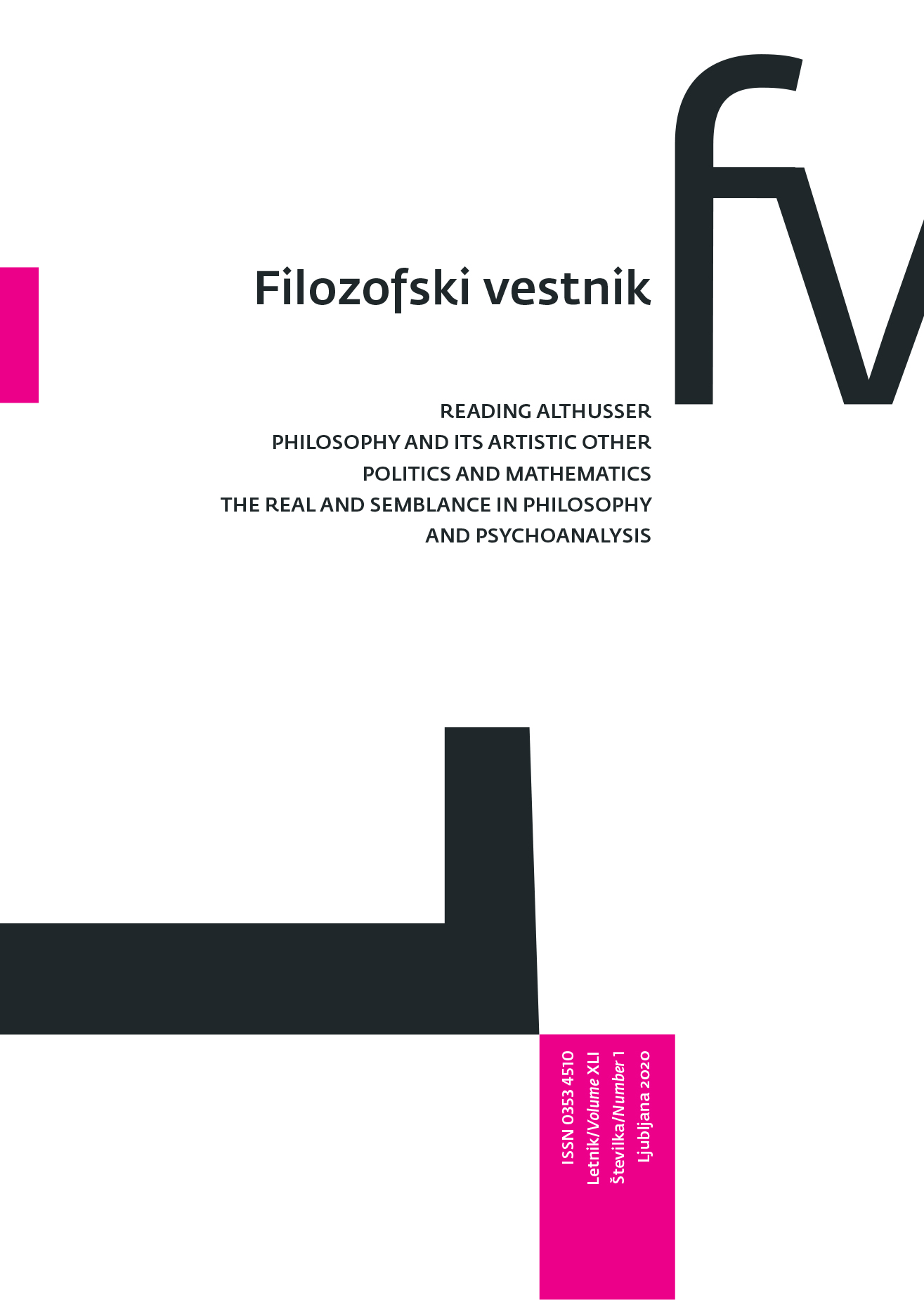Fotografija med afektivnim obratom in afektivno strukturo
DOI:
https://doi.org/10.3986/fv.41.1.07Ključne besede:
teorija fotografije, estetika, afekt, melanholija, indeks, Roland Barthes, Thierry de Duve, Jacques RancièrePovzetek
Afektivni obrat v fotografski teoriji izhaja iz Barthesovega premika od semiologije do afektivne fenomenologije v Cameri lucidi. Pričujoči članek pa se ukvarja z načinom, na katerega afektivna fenomenologija sama temelji na semiološki strukturi fotografije. Ogledamo si, kako je Thierry de Duve, že preden je bila Camera lucida sploh napisana, zarisal afektivne implikacije Barthesovega razumevanja indeksikalne narave fotografije. Članek nato ponovno premisli strukturno afektivnost fotografije onstran Barthesovega in de Duvovega poudarka na neposredni povezavi med indeksikalnostjo in izgubo. Izhajajoč iz obravnave fotografije skozi pojmovanje estetskega režima umetnosti Jacquesa Rancièra, članek poudari nedoločenost fotografije kot posledico načina, na katerega fotoaparat zajame in osami določen prostorsko-časovni fragment. Premestitev pozornosti z indeksikalnosti na nedoločenost prikaže izgubo, ki jo implicira struktura fotografije, v drugačni luči, razlika pa je vzporedna tisti, ki jo med žalovanjem in melanholijo vidi Freud.
Prenosi
Literatura
Agamben, Giorgio, Stanzas. Word and Phantasm in Western Culture, trans. R. L. Martinez, University of Minnesota Press, Minneapolis 1993
Barthes, Roland, Camera Lucida. Reflections on Photography, trans. Richard Howard, Hill and Wang, New York 1981
Benčin, Rok, “Art Between Affect and Indifference in Hegel, Adorno, and Rancière”, Filozofski vestnik 40 (2019), No. 1
— “Proustian Developments: The World and Object of Photography”, SubStance 46 (2017), No. 3
Brown, Elspeth H. and Thy Phu, “Introduction”, in Feeling Photography, ed. Elspeth H. Brown and Thy Phu, Duke University Press, Durham 2014
de Duve, Thierry, “Time Exposure and Snapshot: The Photograph as Paradox”, October 5 (Summer, 1978), pp. 113–125
Elkins, James, What Photography Is, Routledge, New York 2011
Freud, Sigmund, “Mourning and Melancholia”, in The Standard Edition of the Complete Psychological Works of Sigmund Freud, Volume XIV, trans. J. Strachey, The Hogarth Press, London 1957, pp. 243–158
Kracauer, Sigfried, The Past’s Threshold. Essays on Photography, trans. C. Joyce, Diaphanes, Zurich 2014
Prosser, Jay, Light in the Dark Room. Photography and Loss, University of Minnesota Press, Minneapolis 2005
Proust, Marcel, The Guermantes Way, trans. C. K. Scott Moncrieff, http://gutenberg.net.au/ebooks03/0300411.txt (last accessed: 30 November 2020)
Rancière, Jacques, Aisthesis. Scenes from the Aesthetic Regime of Art, trans. Z. Paul, Verso, London 2013
— The Emancipated Spectator, trans. G. Elliott, Verso, London 2009
Smith, Shawn Michelle, “Photography between Desire and Grief: Roland Barthes and F. Holland Day”, in Feeling Photography, ed. Elspeth H. Brown and Thy Phu, Duke University Press, Durham 2014
Tisseron, Serge, La mystère de la chambre Claire. Photographie et inconscient, Flammarion, Paris 1996
Prenosi
Objavljeno
Kako citirati
Številka
Rubrike
Licenca
Avtorji jamčijo, da je delo njihova avtorska stvaritev, da v njem niso kršene avtorske pravice tretjih oseb ali kake druge pravice. V primeru zahtevkov tretjih oseb se avtorji zavezujejo, da bodo varovali interese založnika ter da bodo povrnili morebitno škodo.
Podrobneje v rubriki: Prispevki





